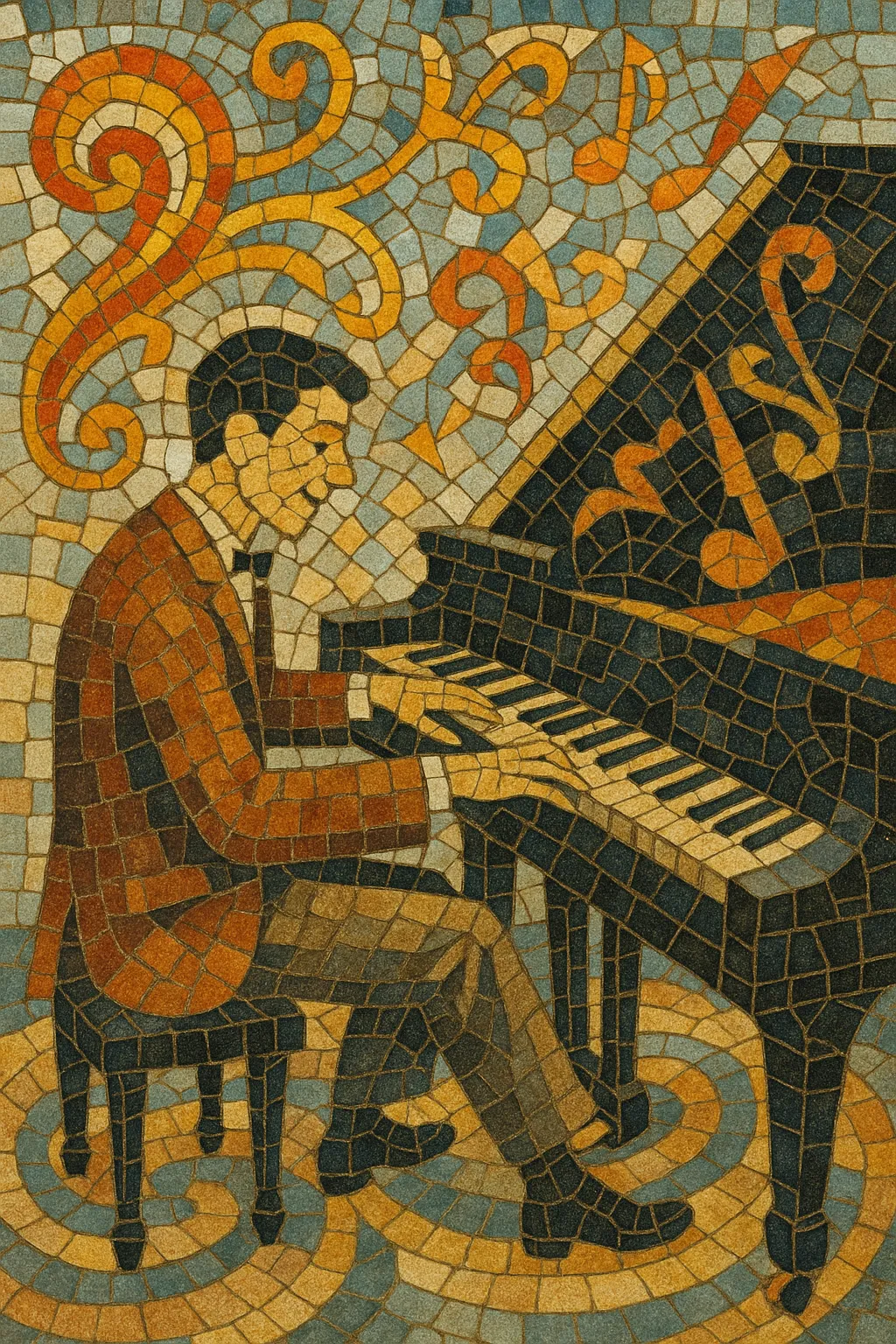
Novelty piano is a virtuosic, light‑hearted style of solo piano that blossomed in the late ragtime and early jazz era. It emphasizes sparkling right‑hand figurations, crisp staccato articulation, clever rhythmic twists, and showy special effects intended to charm and amuse listeners.
Often called "novelty ragtime" by contemporaries, the style carries ragtime’s sectional forms and stride‑like left‑hand patterns into a more chromatic, ornamental, and studio‑friendly idiom. Pieces were typically crafted for 78‑rpm records and piano rolls, resulting in compact, three‑minute showpieces that highlighted fleet fingerwork, whimsical motives, and witty musical "gags."
While rooted in American ragtime and Tin Pan Alley songcraft, novelty piano also absorbed light classical touches and vaudeville theatricality, making it a bridge between ragtime, early jazz, and later lounge/easy‑listening aesthetics.
Felix Arndt’s hit "Nola" (1915) is widely cited as the prototype of novelty piano: a brisk, ornamental piano solo that distilled ragtime’s syncopation into a sparkling, compact record‑era vignette. The style emerged in the United States as ragtime waned and early jazz gained ground, with composers adapting their writing to the technical and timing constraints of piano rolls and 78‑rpm discs.
The early 1920s saw a wave of virtuosic novelties led by Zez Confrey ("Kitten on the Keys," 1921; "Dizzy Fingers," 1923), Roy Bargy, Rube Bloom, Charley Straight, Arthur Schutt, and duo pianists like Victor Arden & Phil Ohman. Their works featured crisp right‑hand filigree, cross‑hand passages, broken‑tenth or stride‑lite left hands, chromatic runs, and playful effects that evoked objects, animals, or mechanical motion.
Player‑piano rolls and early electrical recordings helped spread the style. In the UK, Billy Mayerl popularized a distinctly British take (e.g., "Marigold," 1927), sustaining the idiom into the broadcast era. The compact, high‑clarity arrangements suited radio, cinema interludes, and music publishing, embedding novelty piano into popular listening.
As swing, crooning, and boogie‑woogie rose in the 1930s, novelty piano receded from the pop mainstream but persisted as recital encores and light‑music repertoire. Elements of its bright pianism—snappy articulation, clever figurations, and studio‑tailored brevity—influenced later lounge and easy‑listening aesthetics, mid‑century space‑age pop polish, and various nostalgic revivals tied to ragtime and early jazz. Periodic rediscoveries by historians and pianists have kept its compact showpieces in circulation.

